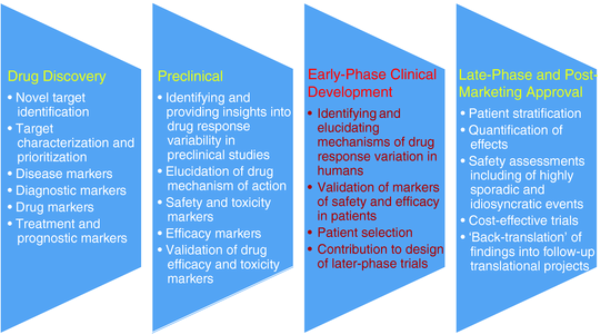Author: Valentina Shakhnovich, MD on May 12, 2016 
What’s the new hot buzz word in “omics” medicine? Answer: pharmacometabolomics. As in everything from identifying novel therapeutic targets to in vivo predictors of drug response. The term metabolomics was coined in 1999 to refer to the study of the entire set of small molecules found in a biologic sample1. In recent years, the field has shifted from cataloging newly discovered metabolites to identifying how specific metabolites affect and reflect biologic function. Thus, metabolomics is, arguably, the “omics” most closely associated with disease and treatment response phenotypes, trumping pharmacogenomics, transcriptomics and proteomics in its biologic relevance to drug discovery and the treatment of human diseases. If you’re not convinced by my trash-talking about the other “lesser” omics, please turn your attention to one recent, clinically relevant, example. In 2011, Dr. Weinshilboum's team from Mayo Clinic demonstrated how variability in the plasma amino acid, glycine, reflected treatment responsiveness to a class of antidepressants, selective serotonin-reuptake inhibitor (SSRI), prescribed to millions of patients world-wide suffering from depression (350 million patients, to be more precise, according to the World Health Organization). This novel glycine pharmacometabotype of depression informed and expedited the genomic discovery of specific genetic variants that contribute to the observed variability in antidepressant efficacy of commonly-prescribed SSRI’s to patients suffering from depression.
Despite this impressive contribution of pharmacometabolomics to understanding and clinically managing partial- and non-responders to pharmacotherapy, review of ClinicalTrials.gov in 2015 revealed a very disappointing shortage of clinical trials utilizing pharmacometabolomics in their study execution or design. In their comprehensive review of pharmacometabolomics in early-phase clinical development, Burt & Nandal outline the benefits and challenges of utilizing pharmacometabolomics to its full potential in facilitating translational effectiveness in drug development and precision medicine implementation. After reading this article you’ll be convinced that pharmacometabolomics is the best omics today.
Reference:
1. Baker, M. Nature Methods. 2011;8:117-121.
Image by Burt, et al. Clin. Trans. Sci., doi: 10.1111/cts.12396, is licensed under CC BY-NC-ND 4.0. ©2016 The authors.

The comment feature is locked by administrator.